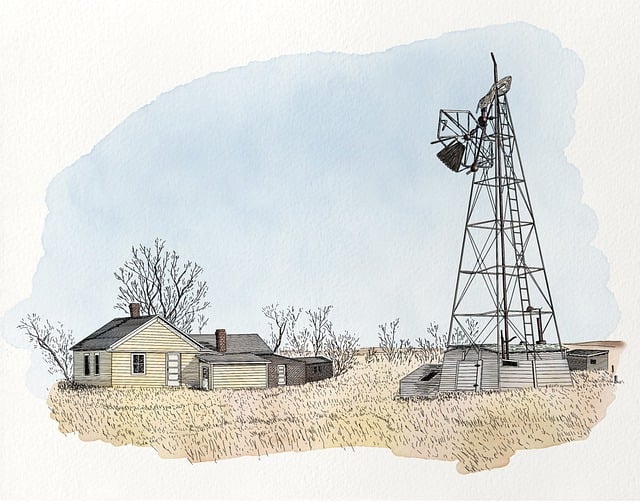House sitting is a practical alternative to traditional pet boarding or security measures, offering a mutually beneficial arrangement where homeowners entrust their homes and belongings to responsible sitters during their absences. Successful house sitting requires reliability, adaptability, attention to detail, and clear communication from sitters, who must be familiar with the local neighborhood, including emergency contacts and services, and adhere to any specific instructions left by the homeowner. Sitters should also manage routine maintenance, handle unexpected issues like plumbing or power outages, and ensure the property's upkeep, all facilitated by online platforms that connect sitters with opportunities tailored to their schedule. This symbiotic relationship is a testament to the shared economy's effectiveness in property care and pet welfare, providing a secure living arrangement for the duration of the homeowner's travel. House sitters must be thoroughly vetted for trustworthiness and reliability, aligning with the homeowner's lifestyle and property needs to ensure a seamless experience. A robust house-sitting plan includes an initial assessment of the property, familiarity with household systems, a detailed checklist, established communication protocols, and a clear action plan for emergencies. Regular updates to homeowners, maintenance of property records, and prompt resolution of issues are integral to maintaining trust and security. Legal compliance is also paramount, with both parties required to understand local laws and regulations regarding temporary occupancy and to formalize the house-sitting arrangement in a written agreement that outlines all responsibilities and expectations. House sitting services underscore the importance of consistent communication and legal adherence for a successful engagement.
When homeowners embark on travel, securing their residence is paramount. Our article delves into tailored house sitting solutions, ensuring your home remains safe and well-maintained in your absence. We explore the critical responsibilities of a trusted house sitter, the steps to craft a personalized plan that offers peace of mind, the importance of maintaining open lines of communication, and legal considerations for secure house sitting arrangements. Whether you’re a homeowner preparing for a getaway or considering becoming a house sitter, this guide provides essential insights into the world of house sitting.
- Understanding the Essentials of House Sitting: A Comprehensive Guide
- The Role of a Trusted House Sitter: Responsibilities and Expectations
- Crafting Your Personalized House Sitting Plan: Steps to Ensure Peace of Mind
- Communication is Key: Keeping Homeowners Updated During Their Absence
- Legal Considerations and Best Practices in House Sitting Arrangements
Understanding the Essentials of House Sitting: A Comprehensive Guide

Engaging in house sitting is a mutually beneficial arrangement where a responsible individual, known as a house sitter, looks after a homeowner’s residence and often their pets or plants while the owners are away. This practice has grown increasingly popular as an alternative to traditional pet boarding or home security solutions. A successful house sitting plan requires a thorough understanding of the responsibilities involved, which includes maintaining the property, ensuring the safety of belongings, and caring for any animals or plants. House sitters must be reliable, adaptable, and possess a keen eye for detail. They should also be comfortable with various home maintenance tasks and understand the importance of clear communication with homeowners to know exactly what is expected during their absence.
To undertake house sitting effectively, one must first familiarize themselves with the local neighborhood and any specific instructions or requirements from the homeowner. This includes knowing the nearest emergency contacts, local services, and any routines that should be maintained while in residence. Additionally, house sitters should be proficient in handling potential issues such as plumbing problems, power outages, or unexpected guest arrivals. With the advent of online platforms and house sitting networks, finding opportunities to engage in this practice has become more accessible than ever. Prospective sitters can leverage these resources to match their availability with homeowners seeking trustworthy individuals for their properties, ensuring a secure and harmonious experience for both parties.
The Role of a Trusted House Sitter: Responsibilities and Expectations

When homeowners embark on travel adventures, entrusting a dwelling to a house sitter assumes paramount importance. A trusted house sitter serves as a guardian of one’s residence, maintaining its security and upholding daily routines. This role encompasses a range of responsibilities, from watering plants to collecting mail, ensuring that the home remains a stable environment in the absence of its occupants. The sitter must also safeguard the property against unauthorized access, acting as a deterrent to potential intruders. Additionally, they are expected to handle basic maintenance issues, report any significant occurrences, and keep the premises in the same condition they found it. Trusted house sitters are the linchpin between an absent homeowner’s peace of mind and the care of their property; they foster a sense of continuity and normalcy in the home during their tenure. Prospective sitters should be vetted for reliability, trustworthiness, and compatibility with the homeowner’s lifestyle and property specifics to ensure a harmonious and secure arrangement. House sitting is a reciprocal relationship that hinges on clear communication of expectations and responsibilities from both parties, ensuring that the homeowner can confidently pursue their travels, knowing their home is in capable hands.
Crafting Your Personalized House Sitting Plan: Steps to Ensure Peace of Mind

When embarking on a house-sitting assignment, crafting a personalized plan is key to ensuring a smooth and secure experience for both homeowners and sitters. A meticulously designed house sitting plan should begin with a thorough assessment of the property’s specific needs and the responsibilities you’ll be entrusted with. This includes understanding the home’s security systems, maintenance routines, and any pet care obligations. Ensure that you have clear instructions for all household appliances and systems to avoid any unintended issues during your tenure. Document these details in a comprehensive checklist, which will serve as a guide throughout your stay.
Next, establish a communication protocol with the homeowners, including their preferred method of contact and the frequency of updates they expect. Determine the best ways to report any incidents or emergencies, ensuring that you’re aware of the nearest emergency services and have their contact information readily available. As part of your plan, create a detailed inventory of all items within the home, noting any valuables and their secure storage locations. Regularly walk through the property, checking locks, windows, and alarms to maintain the highest level of security. By following these steps, you’ll have a robust house sitting plan that will provide peace of mind for both you and the homeowner.
Communication is Key: Keeping Homeowners Updated During Their Absence

When homeowners entrust their homes to house sitters through a house sitting service, maintaining open and consistent communication is paramount. This ensures that the property remains well-looked after and any issues are promptly addressed during the owners’ absence. A reliable house sitting service prioritizes regular updates to homeowners, providing them with peace of mind. These updates can be facilitated through various means such as emails, texts, or calls, depending on the preferences and agreements made beforehand. The house sitter should document daily activities and share them, creating a transparent record that can be reviewed by the homeowners at any time. This level of communication not only reassures the homeowners but also fosters a trustworthy relationship between them and the house sitter, enhancing the overall house sitting experience. Moreover, immediate feedback loops allow for quick resolutions to any unforeseen issues, ensuring that the property remains secure and maintained as if the homeowners were present. By staying in touch, house sitters can also relay important neighborhood updates or local weather conditions that might affect the property, demonstrating their commitment to protecting the homeowners’ interests while they are away.
Legal Considerations and Best Practices in House Sitting Arrangements

When engaging in house sitting arrangements, it’s crucial to navigate the legal framework governing property care and occupancy. Homeowners should be aware that local laws may dictate specific requirements for temporary occupancy. It’s imperative to review rental agreements, property codes, and any applicable zoning regulations to ensure compliance with local housing ordinances. House sitters must also understand their rights and responsibilities within the legal context, including any liabilities they might assume while occupying the premises.
Best practices in house sitting involve clear communication between the homeowner and the sitter. A formal agreement outlining the expectations, duties, and terms of the arrangement can prevent misunderstandings and provide a reference point for both parties. This should include details on maintenance responsibilities, security measures, utility management, and access protocols. Additionally, both parties should agree upon the duration of the house sitting engagement and any conditions under which the agreement may be terminated. It’s also advisable to document any pre-existing property issues and maintain open lines of communication throughout the tenure of the arrangement. Adhering to these best practices helps establish a mutually beneficial and legally sound house sitting arrangement.
When entrusting your home to a house sitter, it’s crucial to establish a tailored plan that aligns with both your needs and their responsibilities. This article has outlined the foundational aspects of effective house sitting, from the essentials one must understand to the communication strategies that keep you connected to your home while away. By following the steps to create a personalized house sitting plan and adhering to legal best practices, homeowners can rest easy knowing their property is in capable hands. House sitting transcends mere oversight; it encompasses a comprehensive approach to safeguarding your home and ensuring its maintenance during your absence. With the insights provided, you are now equipped to make informed decisions and find comfort in the care of a trusted house sitter.
